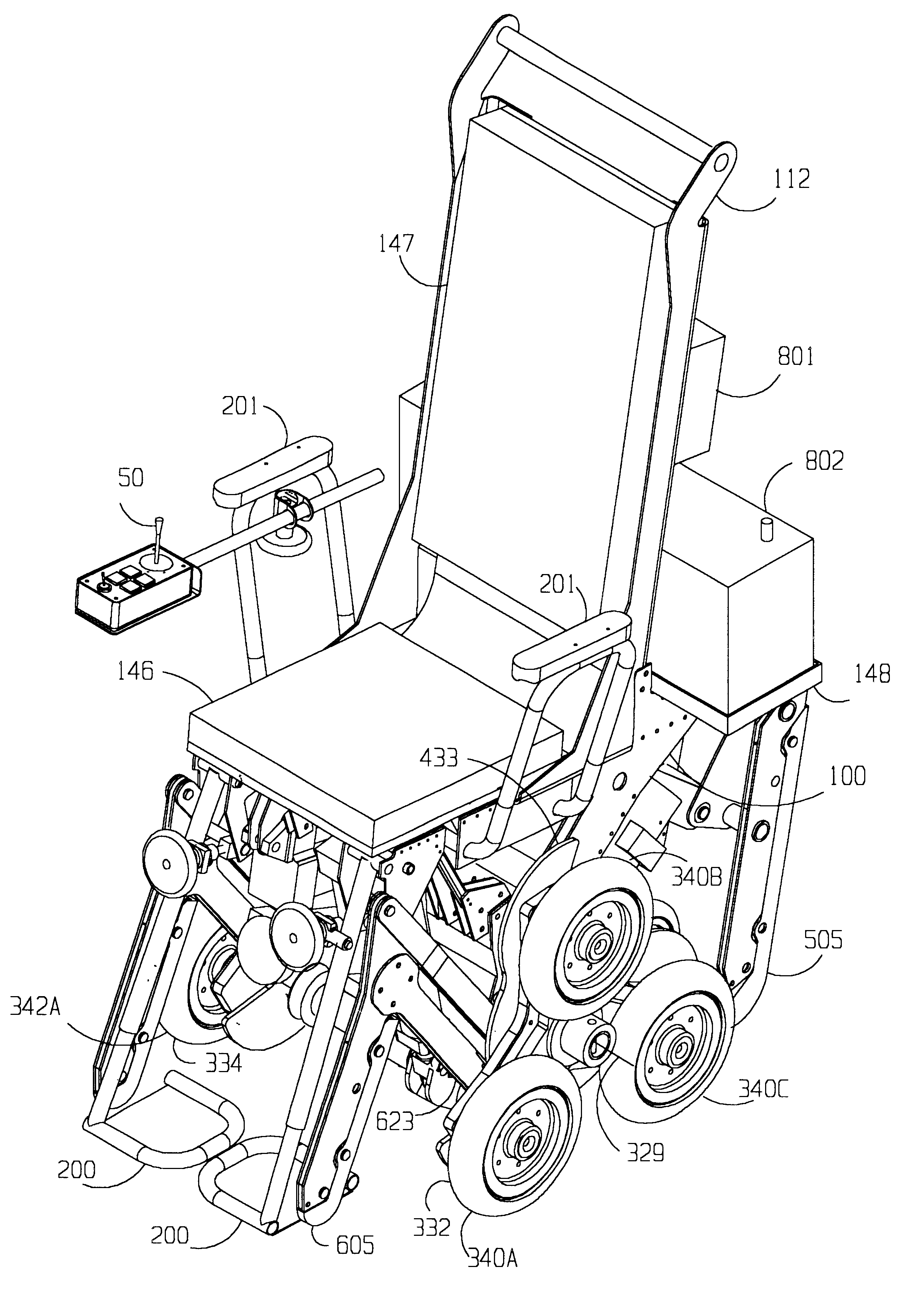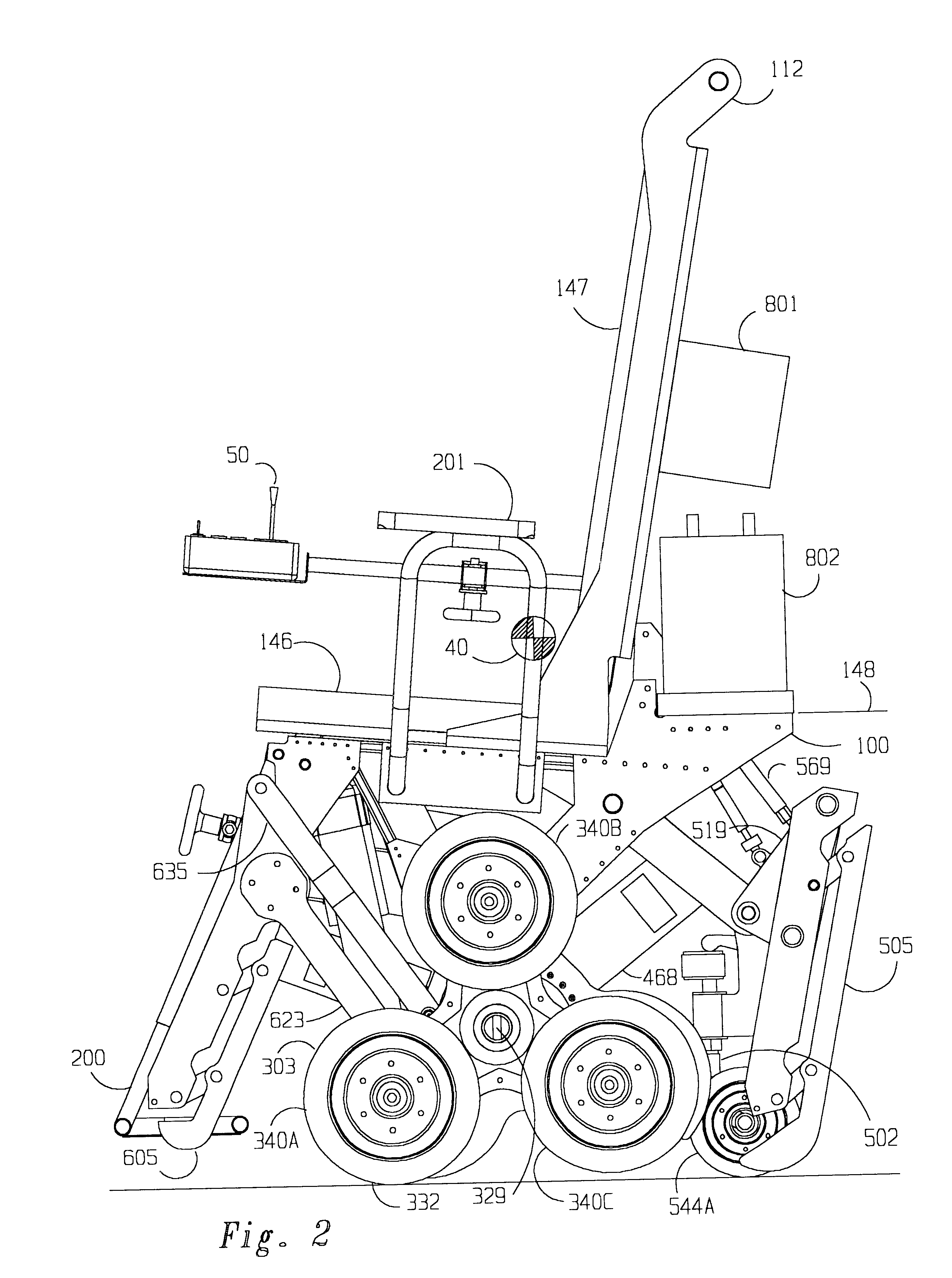Battery powered stair-climbing wheelchair
a wheelchair and battery technology, applied in the field of stair-climbing wheelchairs, can solve the problems of electrically powered wheelchairs, restricted mobility of persons who do not enjoy the full use of legs and feet, and the width of wheelchairs
- Summary
- Abstract
- Description
- Claims
- Application Information
AI Technical Summary
Problems solved by technology
Method used
Image
Examples
Embodiment Construction
Referring initially to FIGS. 1, 2, and 3; a wheelchair 112 in accordance with the present invention is shown in its preferred form-wherein a pair of parallel spider wheels 332 and 334 are mounted on opposite sides of a wheelchair frame 100. Each of the spider wheels 332 and 334 has three spider wheel spokes 330 which extend outwardly from a central, transverse spider wheel rotation axis 329, and each spider wheel has a set of three drive wheels. The individual spokes 330 of the spider wheels 332 and 334 may be designated with the suffixes A,B,C. e.g. 330A etc.
The left set of drive wheels are identified as a group by the reference numeral 340 and the right by 342. Individual drive wheels are designated by the reference numeral 340 or 342 and suffixes A, B, and C, e.g.; 340A or 342A etc. The suffixes A, B, and C refer to a drive wheel in a figure at a particular location rather than a particular drive wheel. A particular drive wheel designated as 340A might be redesignated as 340B or ...
PUM
 Login to View More
Login to View More Abstract
Description
Claims
Application Information
 Login to View More
Login to View More - R&D
- Intellectual Property
- Life Sciences
- Materials
- Tech Scout
- Unparalleled Data Quality
- Higher Quality Content
- 60% Fewer Hallucinations
Browse by: Latest US Patents, China's latest patents, Technical Efficacy Thesaurus, Application Domain, Technology Topic, Popular Technical Reports.
© 2025 PatSnap. All rights reserved.Legal|Privacy policy|Modern Slavery Act Transparency Statement|Sitemap|About US| Contact US: help@patsnap.com



